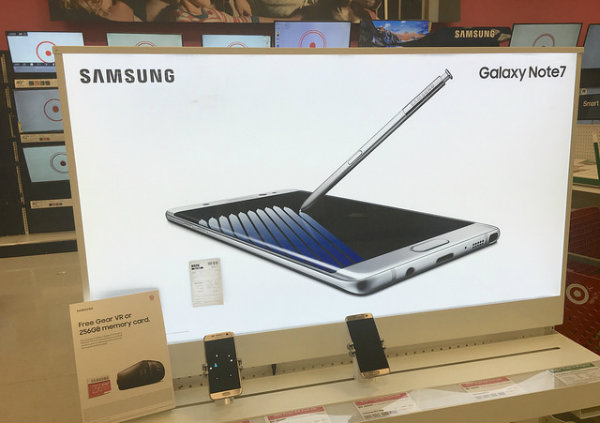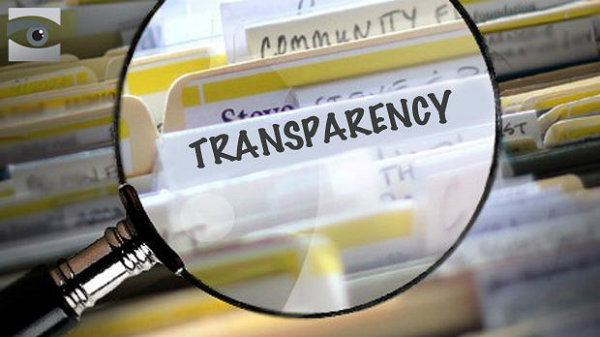Extinguishing the Fire of a Crisis
Published on November 8, 2016, at 2:51 p.m.
By Nicole Morgan.
The race to be the best in the digital world is more competitive than ever. With new smartphones being released every year, tech giants are scrambling to get ahead in the competition. However, one of the most defining aspects that can make or break a brand isn’t its product, but the plan it has on hand in case of a crisis.
Following the release of Samsung’s latest smartphone, the Galaxy Note 7, on August 19, reports of the battery catching on fire began in mid-August. Since then, Samsung has battled recalls and faulty replacement phones, which together have led to a halt in all sales of the smartphone.
So, amid the smoke of chaos in a crisis, what do you do?

Have a plan in place
Not having a procedure in case of a crisis could possibly damage a brand. All brands are prone to face a crisis, but having an effective plan can help soften the blow of a disaster. According to an article on Inc., a plan should map out thorough objectives: “The objectives during any crisis are to protect any individual (employee or public) who may be endangered by the crisis, ensure the key audiences are kept informed, and the organization survives.”
In the case of Samsung, it is unclear whether or not a strategy was in place to handle such a large-scale crisis. In an article on Fortune, inside sources said that since reports of the faulty battery surfaced, Samsung has formed a team to contain the crisis and prevent any further damage.
“Their failure to have any kind of strategy, even to deal with the damages caused by the phone, really extended the reputation damage from the whole deal,” said Erik Bernstein, vice president of Bernstein Crisis Management.
However, even the most sophisticated plans cannot control a crisis. The only thing a brand can truly control in a disaster is communication with its internal and external audiences.
“We never use the phrase ‘crisis management.’ Because public relations cannot cannot manage a crisis. What you can do, is you can manage the communication about the crisis. We call it, ‘crisis communication,’” said Emmanuel Tchividjian, a senior vice president and ethics officer for Ruder-Finn, Inc. “The crisis has a life of its own, and you have to react properly, but you can’t really manage it.”
 React in a timely manner
React in a timely manner
With technology revolutionizing the speed at which the world communicates, a breaking story at the end of the day can turn into a front-page headliner overnight. Begin the first steps of the crisis plan the brand has in place by assessing what has happened, what could potentially happen and whom to contact. Customers would rather hear something than nothing at all.
It’s important to remember that there is a fine line between reacting too quickly and not soon enough. Brands must also be factual when reporting to their customers. Early in September, Samsung reacted quickly by assuring its customers in Hong Kong that they would not be affected by stating that their smartphones had different batteries than the ones that had exploded. This attempt backfired on Samsung when it was forced to retract its statement the next day after realizing that all 500 phones in Hong Kong had been affected.
Be transparent
One of the best ways to defuse rumors and negative media attention is by being open and honest with your audience. Rather than have customers and stakeholders hear from the media about a crisis, be the first to tell them yourself. When being transparent, be sure to get the message out through various forms of communication such as internal announcements, news interviews, social media, etc.
“Tell as much as you can to the public, your customers and other stakeholders. What you don’t know, you promise to tell them when you do know,” Tchividjian advised.

A large setback in the crisis that Samsung faced was the company’s failure to recognize the root of the problem with its product in the beginning. In an article posted on FastCompany, Mark Johnson, an associate professor of operations management at Warwick Business School in the U.K., emphasized that regardless of whether the problem of the faulty battery was known before shipping out the phone, it seems that the process was too rushed in an effort to beat Apple’s iPhone 7. This situation gave customers a negative perception that Samsung placed a higher value on time-to-market than customer safety.
“Samsung just didn’t know what was wrong. A lot of this stems from them rushing the process, so they weren’t aware of where the problems came from, didn’t know where the faulty phones were, nor did they turn around immediately and say how they would respond to it,” Johnson noted in the FastCompany article.
Show empathy
At the end of the day, it is important to remember that your customers are real people who will react positively to empathy. No brand is perfect, but the best brands are the ones that display compassion and a genuine concern for their customers.
“The most important thing in crisis management is showing people that you understand and that you care,” Bernstein said. “Even if something’s not your fault and even if it couldn’t be prevented, you can always show that you care. That goes a very long way.”
Samsung received praise from customers when Tim Baxter, president and COO of Samsung Electronics America, issued a formal apology video in which he stated, “Some of our phones did not meet the standard of excellence that you expect and deserve, and for that we apologize, especially to those of you who were personally affected by this. To those of you who love the Note, the most loyal customers in our Samsung family, we appreciate your passion and your patience.”
Later in the video, Baxter said that the issue had been resolved and that the new Note 7’s were safe to use. When it was discovered that the new smartphones were not safe to use, Samsung immediately removed the video from its official newsroom website.
Samsung has also attempted to ease customers’ frustration of the recent ban of Note 7’s on flights by setting up exchange booths in airports with “high-traffic terminals,” according to TheVerge. The booths have an employee on hand to assist customers with switching out their phones for another device and transferring data.
Although there are mixed reviews on Samsung’s ability to handle this crisis, the story serves as an important reminder of the power of a prepared crisis plan. In today’s fast-paced, digital world, having a plan in place for a potential crisis is one of the most useful tools a brand can have on hand. By thinking ahead, brands can save their images along with the trust and loyalty of their audiences.




